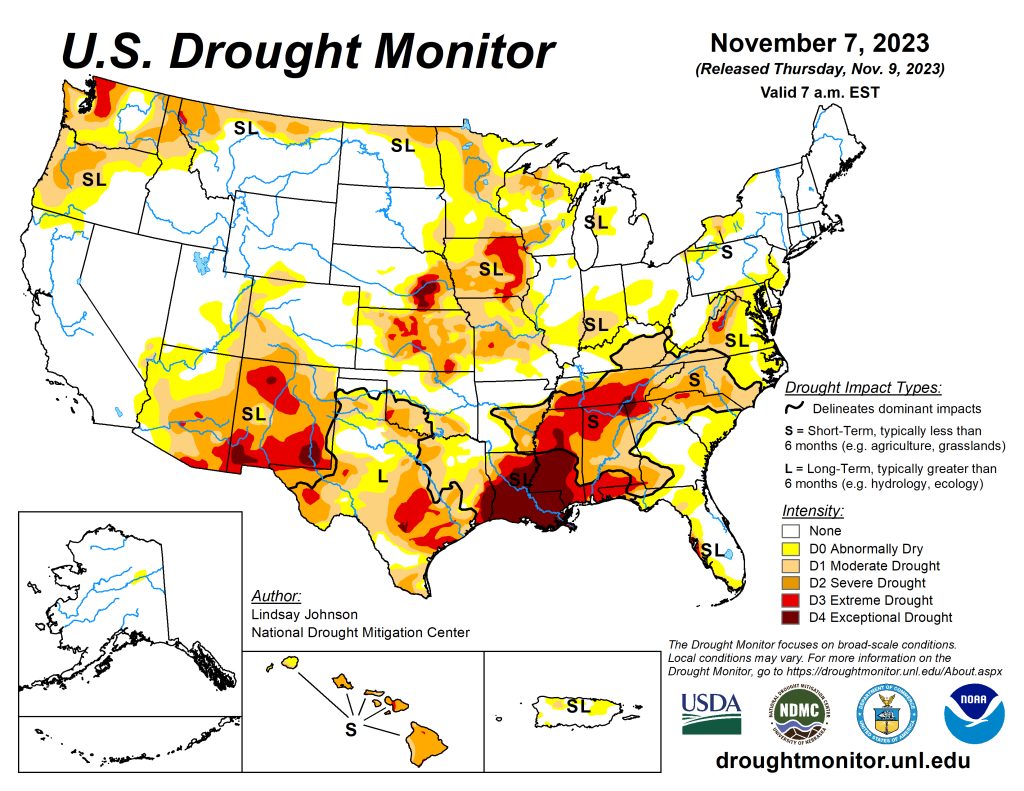Duck numbers down over last November, and much lower than 5-, 10-year average
Published 7:30 am Monday, November 20, 2023

- Louisiana has experienced one of the worst droughts in the country.
Before waterfowlers fired their first shot of the 2023-24 duck hunting season in Louisiana, Jason Olszak was getting a bird’s-eye view of the ducks along the coast as well as in and around Catahoula Lake in LaSalle and Rapides parishes.
Louisiana’s waterfowl study leader and his staffers conducted their second aerial waterfowl popular survey this fall on Nov. 6-8. They saw an estimated 584,000 ducks, the lowest count on record and 27 percent less than last November’s record low estimate of 802,000.
“This year’s estimate is 36-percent lower than the most recent 5-year average (915,000) and 61-percent lower than the most recent 10-year average (1.5 million),” Olszak wrote in his report released Nov. 9, two days before the duck hunting season opened Nov. 11 in the West Zone.
Even the positive news, such as increases over last year for mallards, wigeons, shovelers, ringnecks and canvasbacks, must be taken with a grain of salt. While the mallards estimate jumped 200-percent from 2,000 in November 2022 to 6,000; wigeons climbed 75-perent from 4,000 to 7,000; shovelers skyrocketed 478-percent from 14,000 to 81,000; ringnecks shot up 208-percent from 12,000 to 37,000, and canvasbacks increased 200-percent from 1,000 to 3,000, last year’s combined estimate of each of those species totaled only 33,000 ducks in November 2022, according to Olszak.
The eye-opening decreases among species observed during the plane’s flight over traverse lines, 10 miles apart along the state’s southwest coast, tell the tale of massive decline in numbers. And, Olszak points out, the decreases are among the largest proportion of the state’s overwintering ducks and bag limits.
The downers:
Gadwall – 295,000 to 137,000, minus 54-percent
Green-winged teal – 128,000 to 51,000, minus 60-percent
Blue-winged teal – 200,000 to 154,000, minus 23-percent
Pintail – 101,000 to 89,000, minus 12-percent
Those numbers jump out at even the most casual of duck hunters, of course, but the most chilling part was a graphic accompanying the report. It was a map of the U.S. that detailed the drought conditions in each state.
More than three-quarters of Louisiana was covered in a dark red signifying D4 Exceptional Drought. There was sliver of red showing D3 Extreme Drought and two smaller slices in the extreme northwest corner of the state marking D2 Severe Drought and D1 Moderate Drought.
The state’s waterfowl study leader and veteran waterfowl biologist also sent six videos showing dry, cracked earth across what typically is wet, lush marsh along the coast in southwest Louisiana.
“The biggest issue is a lack of habitat. Statewide, we’ve definitely got a big amount of reduction in the habitat we usually have. It’s a very specific local issue for south Louisiana, especially southwest,” Olszak said from his office on Nov. 16.
When Olszak and his staff flew the aerial waterfowl population estimate route Sept. 11-13, he thought at the time “there was no way it could be worse in November.” Apparently, it is worse, as the region “continues to experience the worst drought conditions in at least 20 years. Though the physical arrangement of water has changed in select areas since September due to localized and discontinuous regional pumping of agricultural fields and interior managed marshes, there continues to be a large-scale paucity of water on the landscape.”
Naturally, those duck hunters who had water in their duck hunting areas probably had better opportunities to during opening weekend to shoot ducks than those who didn’t. Many of them who had the capability pumped freshwater into the ponds and fields they hunt every season.
Some waterfowlers even pumped saltwater into their areas in the marsh, Olszak said.
Rains on back-to-back days, Nov. 13-14, might have filled the cracks in the dry earth and that’s about all.
“I doubt if we see anything noticeable at this point till we get a lot more rain. It takes a lot of water to freshen up the marsh,” Olszak said.
Mississippi and Arkansas also were dealing with drought issues, he said, in their respective states going into the 2023-24 openers – Nov. 18-26 in Arkansas and Nov. 24 in Mississippi.
A large number of migratory birds have yet to make their way into the southern region of the Mississippi Flyway, Olszak said. His colleagues in Missouri, where the winter turned very mild after an early cold snap, said more ducks on the way.
That’s encouraging news. Hopefully, we have the habitat, the water, to keep them here.
DON SHOOPMAN is outdoors editor of The Daily Iberian.





